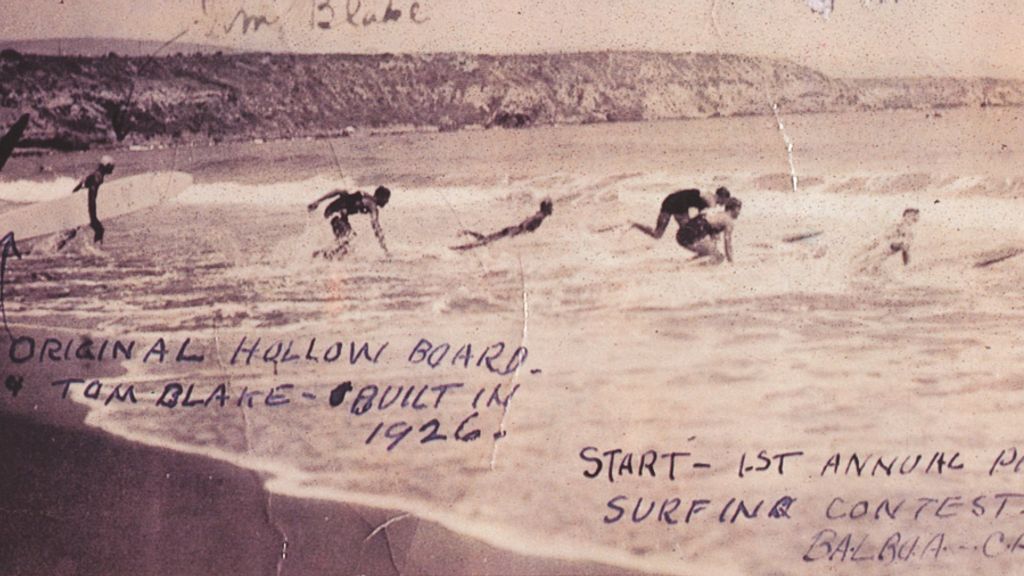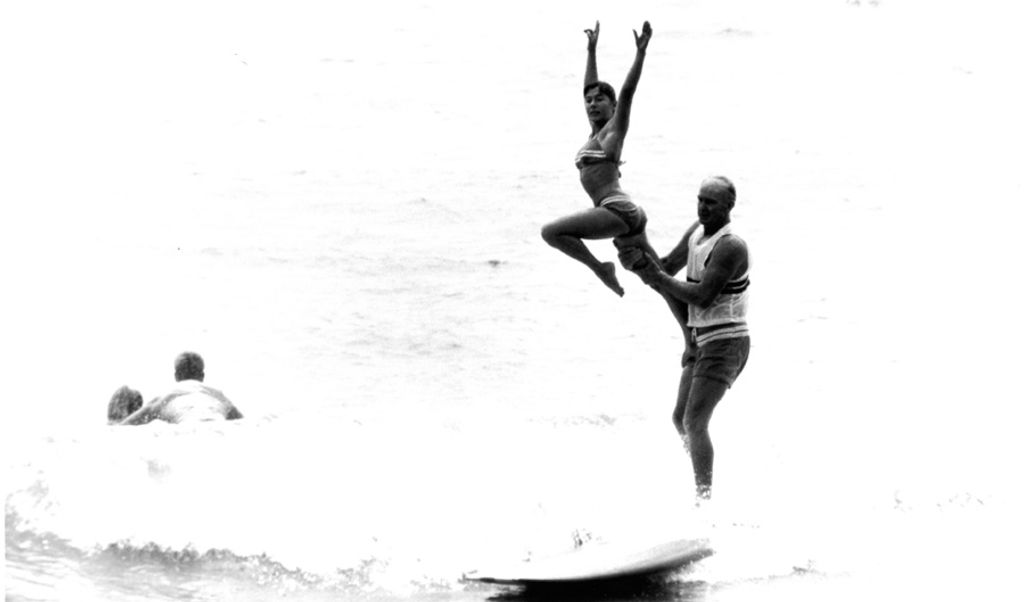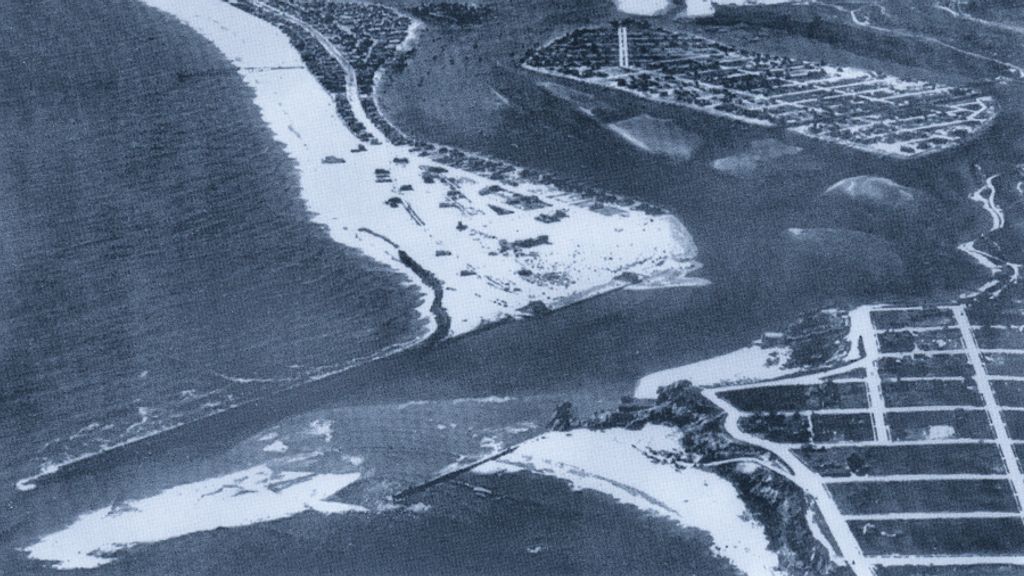SUNDAY JOINT, 4-21-2024: BAREFOOT AND TAN FOR THE GREAT DEPRESSION

Hey All,
Long-time Sunday Joint fanciers might recall me crowing a bit when I posted a complete year-by-year set of Makaha International results, then did the same a few months later with the Duke contest, and I'm about to ride that pony again here today with the Depression-era Pacific Coast Surf Riding Championships.
All the blustering means . . . I'm maybe a little insecure about said accomplishments. Let's take a minute to unpack. First, I am always and forever ambivalent about surf contests; some are great, most land between dull and embarrassing. But contests exist and have over the years taken up a huge amount of time and space in our surf-world discourse, and as a tin-star historian I am professionally obligated to pay attention. Even the anti-contest folk among us are often obsessed with contests, if only to wag a righteous finger at everyone else for being obsessed with contests. Now, it turns out I very much enjoy gathering and organizing and presenting contest results, just for its own sake—the way my wife enjoys jigsaw puzzles. It is engaging, but not especially taxing. It helps, too, that nobody else has bothered doing what we've done here at EOS, and hats off to my surf-data soulmate and EOS team member Brad Barrett, whose low-grade hostility to contests is mastered by his love of detail and arcana and just being a freaky completest. Brad took on those Makaha International pages a few years back like Oppenheimer working on the Manhattan Project.

But the real pleasure for me in amassing and processing contest results comes from reading archival straight-from-the-beach newspaper reports, some of which present a sport that seems ancient and strange, like a surfing version of Poor Things; some of which, with just a few minor adjustments, could be plugged right into this week's WCT event at Margaret River. I love it when our sport seems to have aged to a point where it is virtually unrecognizable. But I love it even more when events from decades ago hit like déjà vu. The hum between past and present, the Möbius loop of history, is why I get all hotted up while exhuming ancient contest results and stories, and why I then prance a bit as they file one-by-one onto the site. We all have our kinks.
Click forth on the new Pacific Coast Surf Riding Championships pages. A sampling:
1928
"Several hundred people lined the beach to witness the contest held under the auspices of the Corona Del Mar Surfboard Association; the fact that Duke Kahanamoku, famous surfboard rider, could not be present did not detract from the excitement of the day."

1929
"Keller Watson of Orange startled thousands of spectators yesterday when he balanced gracefully erect upon his big board and raced ahead of a huge breaker from a mile offshore into the still water of the Corona del Mar bay, one of the most perfect surfboard stunts ever staged."
1932
"Surfboard races will be staged Sunday morning, with some of the leading surfboard thrillers in Southern California competing. Bodysurfing, surfboard paddling, kayak races, and a rough-water swim for girls, will also be part of the aquatic carnival."
1940
"The meet will be staged over a course of approximately a quarter-mile. Each contestant must catch his wave at the left of the starting buoy, stand erect on his board and cross over to the right of the buoy marking the course limit, approximately 440 yards from the start. Points will be awarded to each performer according to the distance he travels after passing the last buoy marking the foul line."

A few thoughts.
First, as you can tell from the 1940 quote above, surf contest rules and formatting, compared to today, were on an entirely different plane of existence. Early Pacific Coast Championship events were more of a race, including a pistol start and beachfront finish line, with some wave-riding thrown in down the final stretch. Later events were based on riding distance and accumulated number of waves. Maneuvers, tricks, style, form—none of these things came into play, as far as I can tell.
Next, Pete Peterson, a slender blade with slicked-back blond hair, was the Kelly Slater of Great Depression surfing, winning the Pacific Coast event four of nine years. The same Pete Peterson who three decades later would dominate tandem surfing as a gruff, bald, Babe Ruth-shaped senior.

Finally, the Pacific Coast Championships was gut-punched on two separate occasions, obviously and terminally in 1941, when America entered into World War II, but also in 1934, when the original venue at Corona Del Mar was more or less destroyed by the Army Corps of Engineers, and let's pause here for a moment to pay respect.
Was Corona Del Mar the best Jazz Age wave in Southern California, when boards were huge and wooden and finless, and the performance objective (as noted above on two occasions) was to stay erect and ride for distance, more or less straight to shore? Maybe so. My first take here was that nearby Long Beach Flood Control was a better wave than Corona Del Mar, and it was, except it was maybe a bit too down-the-line for those finless boards. Same with Malibu. San Onofre, meanwhile, home to the later PCSRC events, wasn't discovered until 1935.
Like Flood Control, Corona Del Mar was both made and unmade by harbor-related projects. Flood Control was ruined as the Port of Long Beach was expanded to accommodate massive US Navy vessels. Corona Del Mar was greatly diminished, but not killed outright, when the jetties on either side of the bay were extended to allow safer passages for local yacht owners.
Both were sandbar breaks, and thus ever-shifting, but where the Flood Control bar was better defined and often mimicked a perfectly-tapered point wave, Corona Del Mar was valued for its long top-fringing swells that could be ridden at length between the jetties, straight into the mouth of the bay. The photos, below, tell the story.

Lower Newport Bay (above), around 1915. The broad sandy area, top-center, is Balboa Peninsula, soon-to-be favorite docking point for Prohibition Age rum-runners.

The just-upgraded West Jetty, nearly 2,000 feet long, in 1922. No East Jetty yet. The Balboa Pavilion is located in the upper-left of the frame, opposite Balboa Pier. Newport was busily waving in the tourists and visitors, and Duke Kahanamoku, in 1914, while spending the weekend at the nearby South Coast Yacht Club, likely became the first to surf Corona Del Mar. "Kahanamoku’s control of the board proved nothing short of marvelous," the Orange County Register noted, "and his work won the unqualified admiration of all who witnessed the exhibition." In 1925, Duke made front-page headlines for saving seven from drowning at Corona Del Mar, after a fishing boat capsized just offshore.


1928, showing the newly-fortified West Jetty and the much smaller, just-completed all-cement East Jetty; surfers parked above the sandy beach in the lower-center of the photo and hung out near the rocks below the bluff or on the East Jetty itself. The new jetties were supposed to create a safer boat channel, but obviously that wasn't the case. The attraction to channel-loving surfers, apart from the long ride, was after finishing a wave in the deep water at the mouth of the bay, you could cruise back to the lineup in the deep water along the West Jetty. Surfers also often rode on the beach side of the East Jetty. The two shots below show what the channel action looked like from ground level.



1936 (above), full rebuild on both jetties, and it's pretty much game over for surfing in the channel—but full steam ahead for the not-yet-named Wedge, left side of the frame.
Remove all jetties, is how I feel, to be honest. Send the cargo ships up to Oakland.
Thanks for reading, and see you next week!
Matt
[Photo grid, clockwise from top left: Del Mar Hotel postcard, 1940s; Duke Kahanamoku at Corona Del Mar, 1927; Pete Peterson; Corona Del Mar bathing beauties; contestants for 1928 Pacific Coast Surf Riding Championships, at Corona Del Mar; Tarzan Smith and unknown tandem partner, 1930s. Brad Barrett and LeRoy Grannis, Malibu, 1969, photo by Drew Kampion. Start of the 1928 Pacific Coast Surf Riding Championships, with winner Tom Blake on the left, in white swim cap. Spectators and contestants at the 1940 Pacific Coast Championships at San Onofre, photo by Doc Ball. Pete Peterson and unknown tandem partner, mid-1960s, photo by LeRoy Grannis. Remaining photos of Corona Del Mar, photographers unknown.]